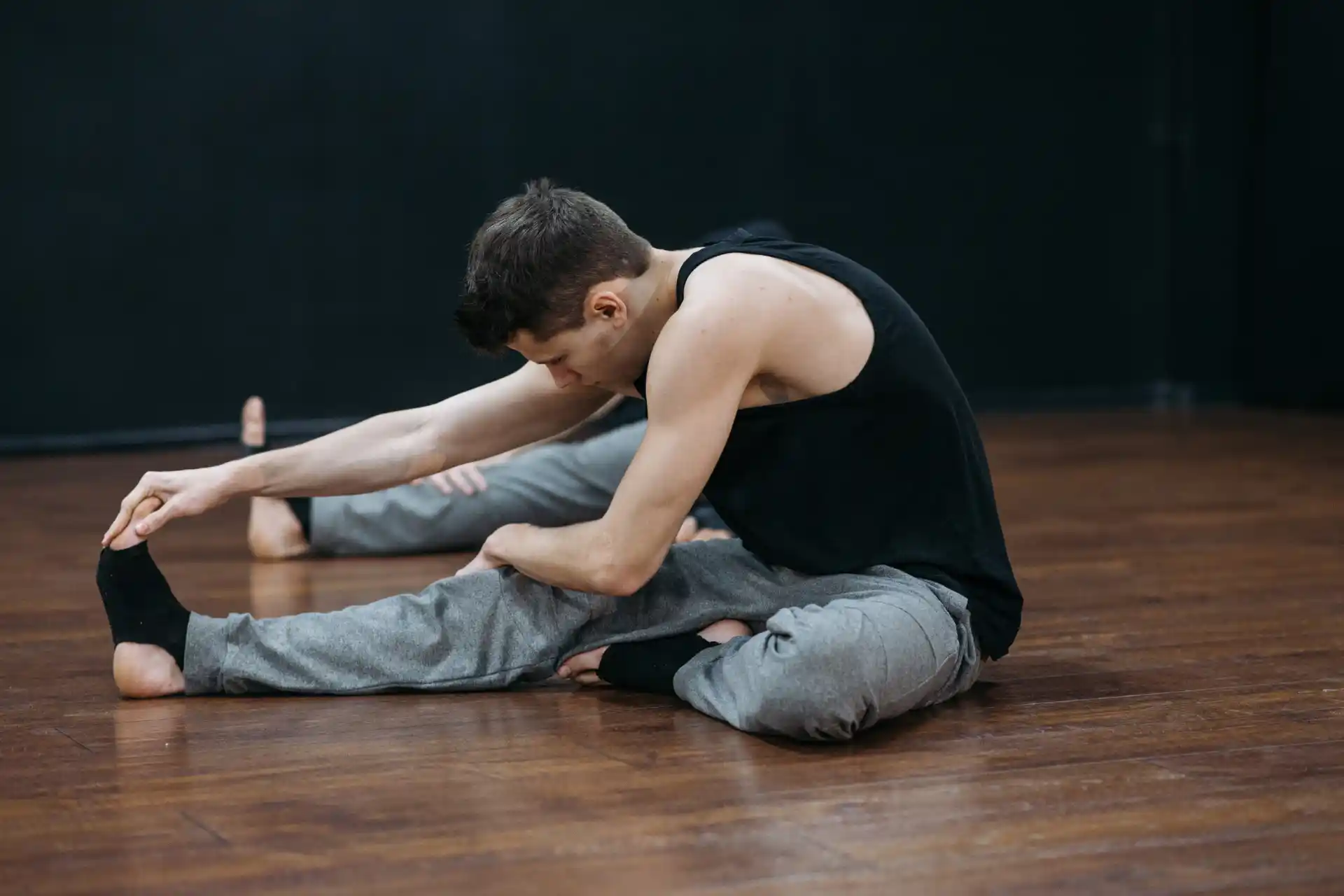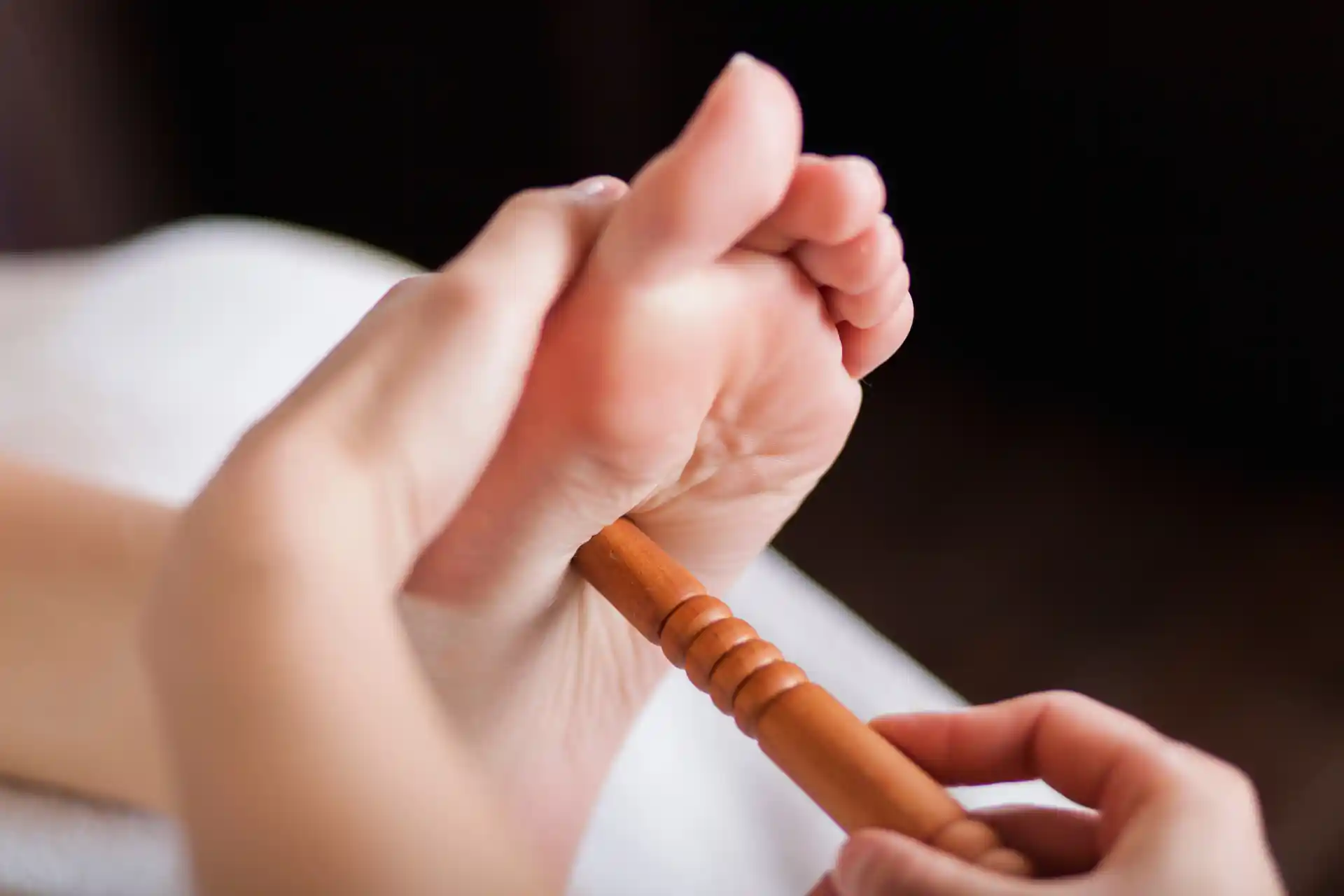Understanding Achilles Tendonitis
If you're experiencing pain or discomfort in your Achilles tendon, it's important to understand the condition known as Achilles tendonitis. By familiarizing yourself with the overview, causes, and symptoms of Achilles tendonitis, you can better identify and address this common issue.
Overview of Achilles Tendonitis
Achilles tendonitis refers to the inflammation of the Achilles tendon, which is the large tendon that connects the calf muscles to the heel bone. This condition often occurs as a result of overuse, repetitive stress, or a sudden increase in physical activity.
It is particularly common in athletes, runners, and individuals who engage in activities that involve frequent jumping or quick bursts of movement.
The Achilles tendon is crucial for proper foot and ankle movement, allowing you to walk, run, jump, and participate in various physical activities. When the tendon becomes inflamed, it can cause pain, tenderness, and swelling in the back of the ankle.
If left untreated, Achilles tendonitis can worsen and potentially lead to more severe conditions such as Achilles tendon rupture.
Causes and Symptoms
Several factors can contribute to the development of Achilles tendonitis. These include:
- Overuse or repetitive stress: Engaging in activities that involve repetitive movements, such as running or jumping, can strain the Achilles tendon over time.
- Sudden increase in activity: Rapidly increasing the intensity, duration, or frequency of physical activity can put excessive stress on the tendon, leading to inflammation.
- Improper footwear: Wearing shoes that do not provide adequate support or cushioning can contribute to the development of Achilles tendonitis.
- Tight calf muscles: Tightness in the calf muscles can increase the strain on the Achilles tendon during movement.
The symptoms of Achilles tendonitis can vary in severity. Common signs and symptoms include:
- Pain and stiffness: You may experience pain and stiffness in the back of the ankle, particularly during physical activity or when waking up in the morning.
- Tenderness and swelling: The area around the Achilles tendon may feel tender to the touch, and there may be noticeable swelling.
- Limited range of motion: You may find it challenging to flex your foot or point your toes downward due to the discomfort in the tendon.
If you suspect that you may have Achilles tendonitis, it is advisable to consult with a healthcare professional for an accurate diagnosis and appropriate treatment. They can perform a thorough examination, including the Achilles tendon pinch test, and recommend suitable Achilles tendonitis therapies based on your specific condition.
Muscles Connected to the Calcaneal Tendon
To understand Achilles tendonitis, it's important to identify the muscles that contribute to the calcaneal tendon. The calcaneal tendon, also known as the Achilles tendon, is the largest tendon in the human body and connects the calf muscles to the heel bone. The three main muscles connected to the calcaneal tendon are the gastrocnemius muscle, the soleus muscle, and the plantaris muscle.
Gastrocnemius Muscle
The gastrocnemius muscle is the largest and most visible muscle of the calf. It is the upper muscle of the calf and forms the bulge commonly known as the calf muscle. The two heads of the gastrocnemius originate from the back of the femur (thighbone) and merge to form the calcaneal tendon. This powerful muscle plays a crucial role in activities such as running, jumping, and walking.
Soleus Muscle
The soleus muscle is a flat muscle located beneath the gastrocnemius muscle. It originates from the tibia (shinbone) and fibula (outer lower leg bone) and also merges with the calcaneal tendon. Although the soleus muscle is not as visible as the gastrocnemius, it is equally important for maintaining balance and providing stability during movements such as standing, walking, and running.
Plantaris Muscle
The plantaris muscle is a small, thin muscle that runs alongside the gastrocnemius muscle. It originates from the femur and merges with the calcaneal tendon. Despite its relatively small size, the plantaris muscle can contribute to Achilles tendon issues, particularly when it becomes tight or inflamed.
In the next section, we will explore the importance of identifying these contributing muscles and how weakness or tightness in these muscles can impact the health of the Achilles tendon.
Importance of Identifying Contributing Muscles
When dealing with Achilles tendonitis, it is crucial to identify the muscles that contribute to the calcaneal tendon. Understanding the role of these muscles can help you better manage and treat the condition.
Effects of Weakness or Tightness
Weakness or tightness in the muscles connected to the calcaneal tendon can have a significant impact on the development and progression of Achilles tendonitis.
- Weakness: If the muscles, such as the gastrocnemius, soleus, or plantaris, are weak, they may not provide adequate support to the Achilles tendon. This can lead to increased stress on the tendon during physical activities, making it more susceptible to injury and inflammation.
- Tightness: Conversely, if these muscles are tight or have limited flexibility, they can place excessive strain on the Achilles tendon. Tightness in the gastrocnemius and soleus muscles is particularly common and can contribute to the development of Achilles tendonitis.
Impact on Achilles Tendon Health
Identifying and addressing issues with the contributing muscles is essential for the overall health of the Achilles tendon. By focusing on strengthening and stretching these muscles, you can alleviate stress on the tendon and promote proper alignment and function.
Proper management of the contributing muscles can also help prevent complications such as Achilles tendon rupture. Ruptures often occur due to a combination of chronic inflammation, weakness, and tightness in the muscles and tendons. Strengthening and stretching exercises can help reduce the risk of such injuries.
To learn more about symptoms and treatment options for Achilles tendonitis, visit our article on Achilles tendonitis therapies. It is important to consult with a healthcare professional or physical therapist for a personalized plan to address your specific condition and needs.
In the next section, we will explore various strategies for strengthening and stretching the muscles connected to the calcaneal tendon, which can aid in the management and recovery of Achilles tendonitis.
Strategies for Strengthening and Stretching
To effectively manage and treat Achilles tendonitis, it's important to incorporate strategies that focus on strengthening and stretching the muscles involved. By targeting specific muscles, such as the gastrocnemius, soleus, and plantaris, you can help alleviate symptoms and promote healing. Here are some exercises and stretches that can be beneficial:
Exercises to Strengthen Gastrocnemius
The gastrocnemius is a major muscle involved in the Achilles tendon. Strengthening this muscle can help provide support and stability to the tendon. Here are a few exercises you can incorporate into your routine:
1. Calf Raises
- Stand with your feet shoulder-width apart, near a wall or support for balance.
- Slowly rise onto your toes, lifting your heels off the ground.
- Hold for a few seconds, then slowly lower your heels back to the starting position.
- Aim for 3 sets of 10-15 repetitions.
2. Gastrocnemius Squats
- Stand with your feet shoulder-width apart.
- Lower into a squat position, keeping your heels on the ground.
- Hold the squat for a few seconds, then slowly rise back up.
- Aim for 3 sets of 10-12 repetitions.
Remember to start with a comfortable range of motion and gradually increase the intensity as your muscles strengthen. If you experience any pain or discomfort, stop the exercise and consult a healthcare professional.
Stretches for the Soleus Muscle
The soleus muscle plays a crucial role in the function of the Achilles tendon. Stretching this muscle can help improve flexibility and relieve tension. Here are a couple of stretches you can try:
1. Wall Calf Stretch
- Stand facing a wall, with your hands against the wall for support.
- Step one foot back, keeping it straight and heel flat on the ground.
- Bend your front knee while keeping your back leg straight.
- Lean forward, feeling a stretch in the calf of your back leg.
- Hold the stretch for 30 seconds, then switch legs and repeat.
2. Soleus Stretch
- Sit on the floor with your legs extended in front of you.
- Bend one knee and place the foot against the inside of the opposite thigh.
- Lean forward, reaching towards your toes, and feel the stretch in your calf.
- Hold the stretch for 30 seconds, then switch legs and repeat.
Perform these stretches daily to help improve flexibility and reduce tightness in the soleus muscle.
Techniques for Addressing Plantaris Muscle
The plantaris muscle, although small, can contribute to Achilles tendonitis. While it is not always necessary to specifically target this muscle, addressing it indirectly through stretching can be beneficial. Here's a stretch that can help:
Plantaris Stretch:
- Stand facing a wall, with your hands against the wall for support.
- Step one foot back, keeping it straight and heel flat on the ground.
- Bend your front knee while keeping your back leg straight.
- Lean forward, feeling a stretch in the calf of your back leg.
- To specifically target the plantaris muscle, slightly rotate your back foot inward during the stretch.
- Hold the stretch for 30 seconds, then switch legs and repeat.
Incorporating these strengthening exercises and stretches into your routine can help improve the condition of your Achilles tendon and aid in the recovery process.
Remember to listen to your body, start with gentle movements, and gradually increase the intensity. If you experience persistent pain or worsening symptoms, consult a healthcare professional for further evaluation and guidance.
If you’re seeking RELIEF® for yourself or a loved one dealing with chronic Achilles tendon and muscle pain, contact us to learn more.




.jpg)

.svg)